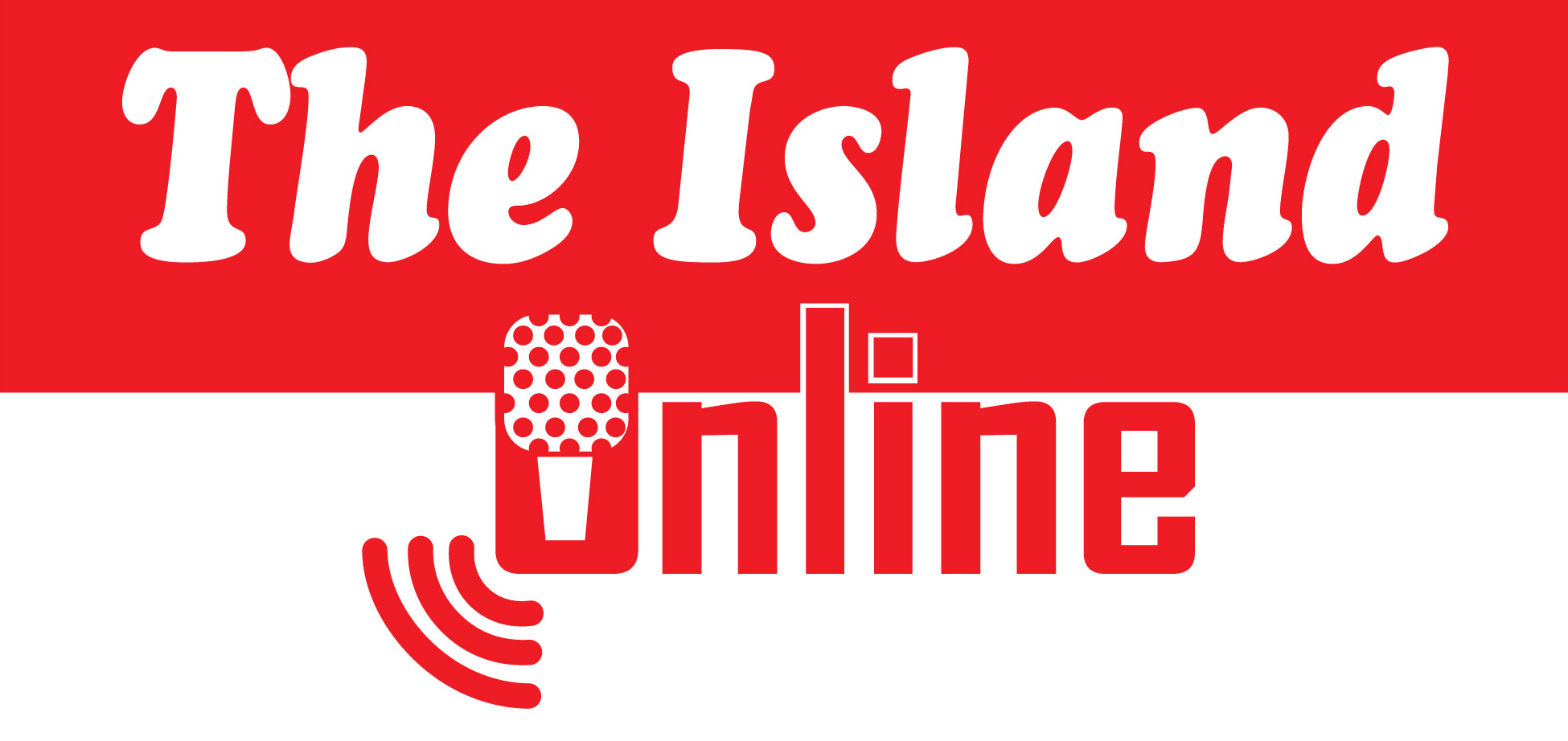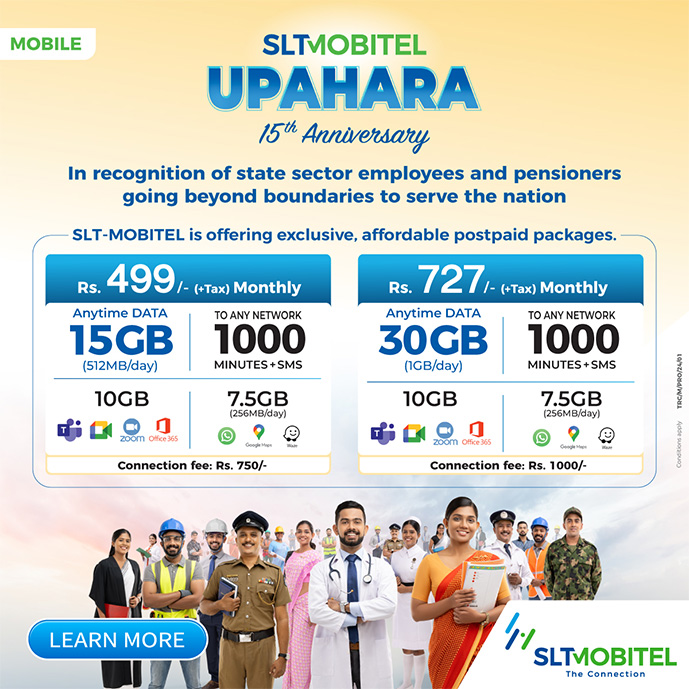Features
Giving ‘wrong’ medical advice?
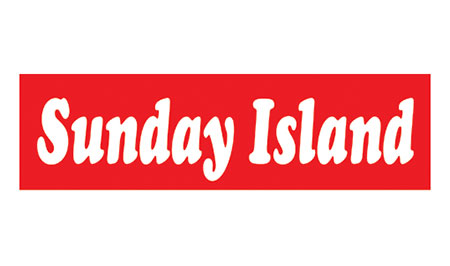
by Dr Upul Wijayawardhana
“Have I given wrong medical advice?” From the time I read the interesting and heart-rending account ‘My 18 week ordeal of double trouble’ by my friend Dr Lakshman Abeyagunawardene (Sunday Island, 25 October) I have been pondering over this question. Poor Lucky has had a double whammy, on top of the lockdown, due to Shingles on his face (Herpes zoster) followed by heart block necessitating a pacemaker implantation. He suffered first due to severe neuralgic pain following Shingles, which is well-known to be one of the most severe and intractable pains, and due to the limitations imposed following the pacemaker implantation. My thoughts were provoked by the following comments:
“I had to go through the procedure of pacemaker implantation while the pain in my right eye persisted. It was after my fainting episode and pacemaker implantation was recommended that I was debarred from climbing stairs. I was confined to the guest room and this is where my agony really started. My wife did not allow me to even go to the living room which was just three steps below. Towards the latter stages, I watched news on the small TV in the kitchen. I had to be satisfied with the laptop computer that my son brought. But it was a far cry from the desktop I was used to. I missed my weekly shot of an alcoholic drink! I had not taken even a beer since the beginning of June.
I think I had a turnaround in my fortunes after the doctor did the Programming on September 27. It was this doctor’s advice that I strictly followed (more so my wife and son) because there was nothing more the Neurologist who was treating my neuralgic pain could do.”
What perplexed me was the advice given not to climb stairs which made my friend’s life miserable. I had never given this advice though I implanted many permanent pacemakers in Sri Lanka as well as in UK. In fact, I can claim credit for starting the permanent pacing programme in Sri Lanka, way back in late seventies, when pacing was in infancy. In spite of the very ‘primitive’ devices I used at the beginning, I did not impose this restriction.
A permanent pacemaker is needed when there is a failure in the electrical conduction system built in the heart to ensure an appropriate heart rate response to bodily needs as well as to coordinate contractions of the four chambers of the heart. The permanent pacing system has two major components. First, there is a ‘box’ with the electronics and a battery. Due to the huge advances in electronics ‘the brain’ of the pacemaker is tiny, the size of the pacemaker depending on the size of the battery. The second component, the leads (electrodes) deliver a tiny current generated in the ‘box’ to the right side of the heart after sensing whether the heart’s own electrical system is functioning properly or not. Invariably, two leads are used, one to the small ‘collecting’ chamber; the atrium and the second to the large muscular chamber; the ventricle. The procedure of implantation is done under strict aseptic conditions. First, the vein underneath one of the collarbones is punctured and the lead is advanced to the heart under x-ray guidance. Once a satisfactory position is found the lead is fixed and connected to the box, which is then implanted in a pocket under the skin.
When I started implantations, batteries lasted only two to five years but today most pacemakers have much smaller batteries lasting more than 10 years, due to improved battery technology. The electronics in the box then was very simple, just discharging a current when it did not sense innate activity but the electronics today is so sophisticated that the pacemaker is able to record and store heart beats continuously. Stored data can be retrieved by interrogating the pacemaker using an externally held device which is also used to programme, to tailor the pacemaker for the needs of each person. Not only the electronic circuitry and batteries but also leads have improved very significantly, becoming slimmer and having fixation devices at the end to make sure the lead tip does not displace. My nightmare, at the beginning, was lead displacement, as there were no fixation devices. This resulted in not infrequent reopening and adjustment, a tedious process.
In spite of refinements lead displacement still occurs, though very rarely, and it is to reduce this that some limitations are imposed. However, I could not find advising against going upstairs in guidelines issued by any renowned Cardiology institution. Patients are advised not to lift the arm of the implant side above shoulder level for four to six weeks. It may well be this recommendation that had been misinterpreted or miscommunicated.
Notwithstanding allegations of overdoing procedures for gain in the private sector, some of which are true unfortunately, I am well aware that the standards of practice of cardiology are very high in Sri Lanka. As a ‘veteran’ who contributed to the establishment of the speciality of cardiology on a firm foundation I can look back with a sense of satisfaction. Therefore, these comments are not meant, in any way, to be critical of the Electro-Physiologist who implanted the pacemaker but to highlight the importance of communication in medicine; an art we had to master on our own. I do not know whether things have changed since and Medical Schools are teaching how to communicate.
Am I guilty of having given wrong advice to patients? Yes, but in my defence, it was mostly ‘authenticated’ wrong advice. What do I mean by that? We give medical advice on the basis of existing medical knowledge which on hindsight may prove wrong. Concepts change with advancing knowledge; accordingly, we change management as well as advice. When I was a young doctor, we advised patients with heart attacks to have strict bed rest for six weeks. It transpired later that it did more harm than good. With new evidence we changed and treatment revolutionised. Now, a patient with a heart attack has an angiogram straight away and the ‘culprit’ vessel is dilated with a stent. Patient is out of bed the next day! I can go on giving many examples. Medicine keeps changing, like any other science. That is the difference from religion where belief is the foundation, not exploration and experiment.
When I was in active practice, I found it difficult to keep pace with advances in my speciality till the world wide web came into being. Since then updating knowledge has become so easy. Before that, I may have given wrong advice without realising that knowledge has passed me by. At least, we know our limitations but wonder whether those who practice static systems of medicine protected for political and historical reasons realise that they are giving outdated advice. We need to be in touch with new developments and revise our advice accordingly. Admittedly, it is no easy task but one that should be done, as misguided advice can make life intolerable for patients, as Lucky’s story clearly illustrates.
- News Advertiesment
See Kapruka’s top selling online shopping categories such as Toys, Grocery, Flowers, Birthday Cakes, Fruits, Chocolates, Clothing and Electronics. Also see Kapruka’s unique online services such as Money Remittence,News, Courier/Delivery, Food Delivery and over 700 top brands. Also get products from Amazon & Ebay via Kapruka Gloabal Shop into Sri Lanka.
Features
Islamophobia and the threat to democratic development
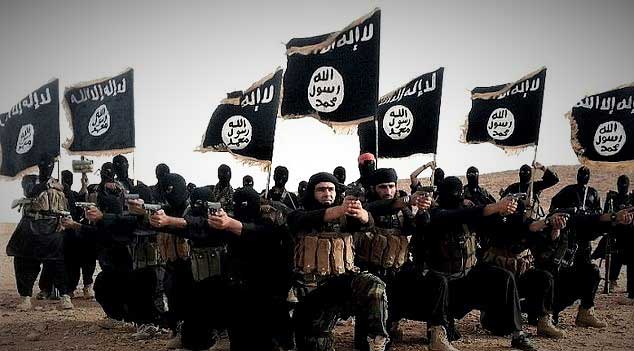
There’s an ill more dangerous and pervasive than the Coronavirus that’s currently sweeping Sri Lanka. That is the fear to express one’s convictions. Across the public sector of the country in particular many persons holding high office are stringently regulating and controlling the voices of their consciences and this bodes ill for all and the country.
The corrupting impact of fear was discussed in this column a couple of weeks ago when dealing with the military coup in Myanmar. It stands to the enduring credit of ousted Myanmarese Head of Government Aung San Suu Kyi that she, perhaps for the first time in the history of modern political thought, singled out fear, and not power, as the principal cause of corruption within the individual; powerful or otherwise.
To be sure, power corrupts but the corrupting impact of fear is graver and more devastating. For instance, the fear in a person holding ministerial office or in a senior public sector official, that he would lose position and power as a result of speaking out his convictions and sincere beliefs on matters of the first importance, would lead to a country’s ills going unaddressed and uncorrected.
Besides, the individual concerned would be devaluing himself in the eyes of all irrevocably and revealing himself to be a person who would be willing to compromise his moral integrity for petty worldly gain or a ‘mess of pottage’. This happens all the while in Lankan public life. Some of those who have wielded and are wielding immense power in Sri Lanka leave very much to be desired from these standards.
It could be said that fear has prevented Sri Lanka from growing in every vital respect over the decades and has earned for itself the notoriety of being a directionless country.
 All these ills and more are contained in the current controversy in Sri Lanka over the disposal of the bodies of Covid victims, for example. The Sri Lankan polity has no choice but to abide by scientific advice on this question. Since authorities of the standing of even the WHO have declared that the burial of the bodies of those dying of Covid could not prove to be injurious to the wider public, the Sri Lankan health authorities could go ahead and sanction the burying of the bodies concerned. What’s preventing the local authorities from taking this course since they claim to be on the side of science? Who or what are they fearing? This is the issue that’s crying out to be probed and answered.
All these ills and more are contained in the current controversy in Sri Lanka over the disposal of the bodies of Covid victims, for example. The Sri Lankan polity has no choice but to abide by scientific advice on this question. Since authorities of the standing of even the WHO have declared that the burial of the bodies of those dying of Covid could not prove to be injurious to the wider public, the Sri Lankan health authorities could go ahead and sanction the burying of the bodies concerned. What’s preventing the local authorities from taking this course since they claim to be on the side of science? Who or what are they fearing? This is the issue that’s crying out to be probed and answered.
Considering the need for absolute truthfulness and honesty on the part of all relevant persons and quarters in matters such as these, the latter have no choice but to resign from their positions if they are prevented from following the dictates of their consciences. If they are firmly convinced that burials could bring no harm, they are obliged to take up the position that burials should be allowed.
If any ‘higher authority’ is preventing them from allowing burials, our ministers and officials are conscience-bound to renounce their positions in protest, rather than behave compromisingly and engage in ‘double think’ and ‘double talk’. By adopting the latter course they are helping none but keeping the country in a state of chronic uncertainty, which is a handy recipe for social instabiliy and division.
In the Sri Lankan context, the failure on the part of the quarters that matter to follow scientific advice on the burials question could result in the aggravation of Islamophobia, or hatred of the practitioners of Islam, in the country. Sri Lanka could do without this latter phobia and hatred on account of its implications for national stability and development. The 30 year war against separatist forces was all about the prevention by military means of ‘nation-breaking’. The disastrous results for Sri Lanka from this war are continuing to weigh it down and are part of the international offensive against Sri Lanka in the UNHCR.
However, Islamophobia is an almost world wide phenomenon. It was greatly strengthened during Donald Trump’s presidential tenure in the US. While in office Trump resorted to the divisive ruling strategy of quite a few populist authoritarian rulers of the South. Essentially, the manoeuvre is to divide and rule by pandering to the racial prejudices of majority communities.
It has happened continually in Sri Lanka. In the initial post-independence years and for several decades after, it was a case of some populist politicians of the South whipping-up anti-Tamil sentiments. Some Tamil politicians did likewise in respect of the majority community. No doubt, both such quarters have done Sri Lanka immeasurable harm. By failing to follow scientific advice on the burial question and by not doing what is right, Sri Lanka’s current authorities are opening themselves to the charge that they are pandering to religious extremists among the majority community.
The murderous, destructive course of action adopted by some extremist sections among Muslim communities world wide, including of course Sri Lanka, has not earned the condemnation it deserves from moderate Muslims who make-up the preponderant majority in the Muslim community. It is up to moderate opinion in the latter collectivity to come out more strongly and persuasively against religious extremists in their midst. It will prove to have a cementing and unifying impact among communities.
It is not sufficiently appreciated by governments in the global South in particular that by voicing for religious and racial unity and by working consistently towards it, they would be strengthening democratic development, which is an essential condition for a country’s growth in all senses.
A ‘divided house’ is doomed to fall; this is the lesson of history. ‘National security’ cannot be had without human security and peaceful living among communities is central to the latter. There cannot be any ‘double talk’ or ‘politically correct’ opinions on this question. Truth and falsehood are the only valid categories of thought and speech.
Those in authority everywhere claiming to be democratic need to adopt a scientific outlook on this issue as well. Studies conducted on plural societies in South Asia, for example, reveal that the promotion of friendly, cordial ties among communities invariably brings about healing among estranged groups and produces social peace. This is the truth that is waiting to be acted upon.
Features
Pakistan’s love of Sri Lanka
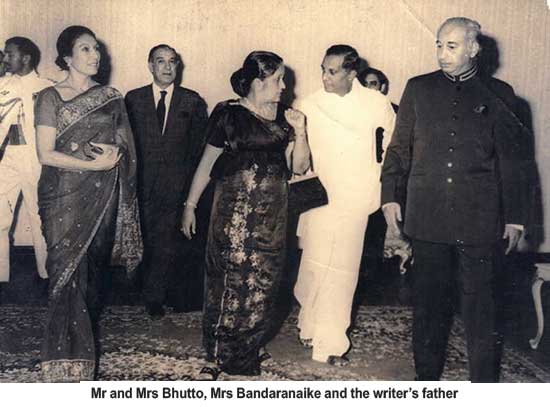
By Sanjeewa Jayaweera
It was on 3rd January 1972 that our family arrived in Karachi from Moscow. Our departure from Moscow had been delayed for a few weeks due to the military confrontation between Pakistan and India. It ended on 16th December 1971. After that, international flights were not permitted for some time.
The contrast between Moscow and Karachi was unbelievable. First and foremost, Moscow’s temperature was near minus 40 degrees centigrade, while in Karachi, it was sunny and a warm 28 degrees centigrade. However, what struck us most was the extreme warmth with which the airport authorities greeted our family. As my father was a diplomat, we were quickly ushered to the airport’s VIP Lounge. We were in transit on our way to Rawalpindi, the airport serving the capital of Islamabad.
We quickly realized that the word “we are from Sri Lanka” opened all doors just as saying “open sesame” gained entry to Aladdin’s cave! The broad smile, extreme courtesy, and genuine warmth we received from the Pakistani people were unbelievable.
This was all to do with Mrs Sirima Bandaranaike’s decision to allow Pakistani aircraft to land in Colombo to refuel on the way to Dhaka in East Pakistan during the military confrontation between Pakistan and India. It was a brave decision by Mrs Bandaranaike (Mrs B), and the successive governments and Sri Lanka people are still enjoying the fruits of it. Pakistan has been a steadfast and loyal supporter of our country. They have come to our assistance time and again in times of great need when many have turned their back on us. They have indeed been an “all-weather” friend of our country.
Getting back to 1972, I was an early beneficiary of Pakistani people’s love for Sri Lankans. I failed the entrance exam to gain entry to the only English medium school in Islamabad! However, when I met the Principal, along with my father, he said, “Sanjeewa, although you failed the entrance exam, I will this time make an exception as Sri Lankans are our dear friends.” After that, the joke around the family dinner table was that I owed my education in Pakistan to Mrs B!
At school, my brother and I were extended a warm welcome and always greeted “our good friends from Sri Lanka.” I felt when playing cricket for our college; our runs were cheered more loudly than of others.
One particular incident that I remember well was when the Embassy received a telex from the Foreign inistry. It requested that our High Commissioner seek an immediate meeting with the Prime Minister of Pakistan, Mr Zulifikar Ali Bhutto (ZB), and convey a message from Mrs B. The message requested that an urgent shipment of rice be dispatched to Sri Lanka as there would be an imminent rice shortage. As the Ambassador was not in the station, the responsibility devolved on my father.
It usually takes about a week or more to get an audience with the Prime Minister (PM) of a foreign country due to their busy schedule. However, given the urgency, my father spoke to the Foreign Ministry’s Permanent Sectary, who fortunately was our neighbour and sought an urgent appointment. My father received a call from the PM’s secretary around 10 P.M asking him to come over to the PM’s residence. My father met ZB around midnight. ZB was about to retire to bed and, as such, was in his pyjamas and gown enjoying a cigar! He had greeted my father and had asked, “Mr Jayaweera, what can we do for great friend Madam Bandaranaike?. My father conveyed the message from Colombo and quietly mentioned that there would be riots in the country if there is no rice!
ZB had immediately got the Food Commissioner of Pakistan on the line and said, “I want a shipload of rice to be in Colombo within the next 72 hours!” The Food Commissioner reverted within a few minutes, saying that nothing was available and the last export shipment had left the port only a few hours ago to another country. ZB had instructed to turn the ship around and send it to Colombo. This despite protests from the Food Commissioner about terms and conditions of the Letter of Credit prohibiting non-delivery. Sri Lanka got its delivery of rice!
The next was the visit of Mrs B to Pakistan. On arrival in Rawalpindi airport, she was given a hero’s welcome, which Pakistan had previously only offered to President Gaddafi of Libya, who financially backed Pakistan with his oil money. That day, I missed school and accompanied my parents to the airport. On our way, we witnessed thousands of people had gathered by the roadside to welcome Mrs B.
When we walked to the airport’s tarmac, thousands of people were standing in temporary stands waving Sri Lanka and Pakistan flags and chanting “Sri Lanka Pakistan Zindabad.” The noise emanating from the crowd was as loud and passionate as the cheering that the Pakistani cricket team received during a test match. It was electric!
I believe she was only the second head of state given the privilege of addressing both assemblies of Parliament. The other being Gaddafi. There was genuine affection from Mrs B amongst the people of Pakistan.
I always remember the indefatigable efforts of Mr Abdul Haffez Kardar, a cabinet minister and the President of the Pakistan Cricket Board. From around 1973 onwards, he passionately championed Sri Lanka’s cause to be admitted as a full member of the International Cricket Council (ICC) and granted test status. Every year, he would propose at the ICC’s annual meeting, but England and Australia’s veto kept us out until 1981.
I always felt that our Cricket Board made a mistake by not inviting Pakistan to play our inaugural test match. We should have appreciated Mr Kardar and Pakistan’s efforts. In 1974 the Pakistan board invited our team for a tour involving three test matches and a few first-class games. Most of those who played in our first test match was part of that tour, and no doubt gained significant exposure playing against a highly talented Pakistani team.
Several Pakistani greats were part of the Pakistan and India team that played a match soon after the Central Bank bomb in Colombo to prove that it was safe to play cricket in Colombo. It was a magnificent gesture by both Pakistan and India. Our greatest cricket triumph was in Pakistan when we won the World Cup in 1996. I am sure the players and those who watched the match on TV will remember the passionate support our team received that night from the Pakistani crowd. It was like playing at home!
I also recall reading about how the Pakistani government air freighted several Multi Barrell artillery guns and ammunition to Sri Lanka when the A rmy camp in Jaffna was under severe threat from the LTTE. This was even more important than the shipload of rice that ZB sent. This was crucial as most other countries refused to sell arms to our country during the war.
Time and again, Pakistan has steadfastly supported our country’s cause at the UNHCR. No doubt this year, too, their diplomats will work tirelessly to assist our country.
We extend a warm welcome to Mr Imran Khan, the Prime Minister of Pakistan. He is a truly inspirational individual who was undoubtedly an excellent cricketer. Since retirement from cricket, he has decided to get involved in politics, and after several years of patiently building up his support base, he won the last parliamentary elections. I hope that just as much as he galvanized Sri Lankan cricketers, his political journey would act as a catalyst for people like Kumar Sangakkara and Mahela Jayawardene to get involved in politics. Cricket has been called a “gentleman’s game.” Whilst politics is far from it!.
Features
Covid-19 health rules disregarded at entertainment venues?
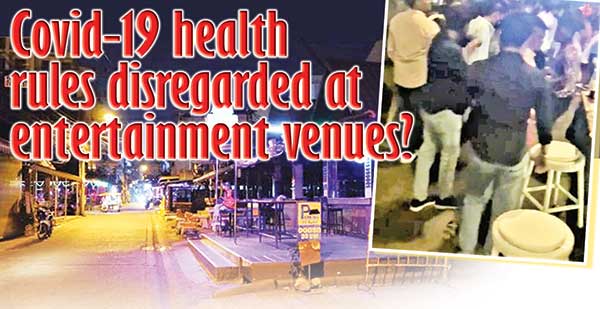
Believe me, seeing certain videos, on social media, depicting action, on the dance floor, at some of these entertainment venues, got me wondering whether this Coronavirus pandemic is REAL!
To those having a good time, at these particular venues, and, I guess, the management, as well, what the world is experiencing now doesn’t seem to be their concerned.
Obviously, such irresponsible behaviour could create more problems for those who are battling to halt the spread of Covid-19, and the new viriant of Covid, in our part of the world.
The videos, on display, on social media, show certain venues, packed to capacity – with hardly anyone wearing a mask, and social distancing…only a dream..
How can one think of social distancing while gyrating, on a dance floor, that is over crowded!
If this trend continues, it wouldn’t be a surprise if Coronavirus makes its presence felt…at such venues.
And, then, what happens to the entertainment scene, and those involved in this field, especially the musicians? No work, whatsoever!
Lots of countries have closed nightclubs, and venues, where people gather, in order to curtail the spread of this deadly virus that has already claimed the lives of thousands.
Thailand did it and the country is still having lots of restrictions, where entertainment is concerned, and that is probably the reason why Thailand has been able to control the spread of the Coronavirus.
With a population of over 69 million, they have had (so far), a little over 25,000 cases, and 83 deaths, while we, with a population of around 21 million, have over 80,000 cases, and more than 450 deaths.
I’m not saying we should do away with entertainment – totally – but we need to follow a format, connected with the ‘new normal,’ where masks and social distancing are mandatory requirements at these venues. And, dancing, I believe, should be banned, at least temporarily, as one can’t maintain the required social distance, while on the dance floor, especially after drinks.
Police spokesman DIG Ajith Rohana keeps emphasising, on TV, radio, and in the newspapers, the need to adhere to the health regulations, now in force, and that those who fail to do so would be penalised.
He has also stated that plainclothes officers would move around to apprehend such offenders.
Perhaps, he should instruct his officers to pay surprise visits to some of these entertainment venues.
He would certainly have more than a bus load of offenders to be whisked off for PCR/Rapid Antigen tests!
I need to quote what Dr. H.T. Wickremasinghe said in his article, published in The Island of Tuesday, February 16th, 2021:
“…let me conclude, while emphasising the need to continue our general public health measures, such as wearing masks, social distancing, and avoiding crowded gatherings, to reduce the risk of contact with an infected person.
“There is no science to beat common sense.”
But…do some of our folks have this thing called COMMON SENSE!


